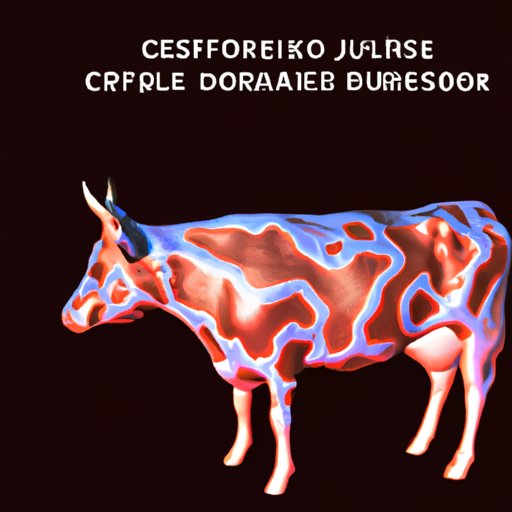
Introduction
Creutzfeldt-Jakob disease, commonly known as CJD, is a rare yet fatal disease that affects the brain and nervous system. It is part of a group of illnesses known as prion diseases, which occur when abnormal proteins called prions invade and damage normal brain tissue. In this article, we will explore the causes, symptoms, diagnosis, treatment, and prevention of CJD, as well as its devastating effects on families and society. By the end of this article, you should have a better understanding of what CJD is, how it affects individuals and communities, and what is being done to cure and prevent it.
Understanding Creutzfeldt-Jakob Disease: A Comprehensive Guide
The exact cause of CJD is still not fully understood, though scientists believe that it is related to the accumulation of abnormal prion proteins in the brain. These proteins cause other healthy proteins in the brain to fold abnormally, leading to the formation of damaging plaques. In most cases, CJD occurs spontaneously, but it can also be inherited from a family member or acquired through exposure to contaminated prions.
Symptoms of CJD vary depending on the type of illness, the affected individual’s age, and other factors. However, some common symptoms include memory loss, confusion, difficulty speaking or remembering words, rapidly progressing dementia, involuntary muscle movements, and seizures. Other symptoms may include vision, hearing, and balance problems, along with personality changes, insomnia, and depression.
Diagnosis of CJD can be challenging, especially in the early stages of the disease. Doctors may use a range of tests, such as brain scans, spinal taps, and neurological exams, to rule out other conditions and make a definitive diagnosis. Unfortunately, there is no cure for CJD, but there are several treatment options available to manage symptoms and improve quality of life. These include medications, physical therapy, occupational therapy, and speech therapy.
The Devastating Effects of Creutzfeldt-Jakob Disease: One Family’s Story
The impact of CJD on families and communities cannot be overstated. When a loved one is diagnosed with CJD, it can be an incredibly stressful and upsetting experience for everyone involved. In some cases, patients may become unable to recognize their family members or themselves, leading to deep emotional pain and confusion for both patients and their families.
One family’s experience with CJD illustrates the intense emotional toll that the disease can take. When their mother was diagnosed with CJD, the family was devastated. They watched helplessly as she rapidly lost her memory and ability to communicate, eventually slipping into a coma. The family was forced to make the difficult decision of taking her off life support, and they continue to struggle with the grief and pain of her loss.
The importance of raising awareness about CJD cannot be overstated. When more people are aware of the disease and its symptoms, it becomes easier to identify and diagnose cases early on, potentially improving outcomes and quality of life for patients and their families.
Famous Cases of Creutzfeldt-Jakob Disease: What We Can Learn from History
CJD has made headlines in the past due to several high-profile cases, including an outbreak of mad cow disease in the United Kingdom, which resulted in the deaths of more than 170 people. While these cases are tragic, they have also led to important lessons and research on disease prevention and management.
Scientific research has helped us to better understand how CJD is transmitted and what risk factors can lead to its development. There have also been advancements in preventative measures, such as banning certain foods and rigorously testing meat products for contamination. Overall, learning from past cases of CJD can help us better understand and manage the disease in the future.
Preventing Creutzfeldt-Jakob Disease: What You Need to Know
While there is no surefire way to prevent CJD, there are certain steps that individuals can take to reduce their risk of developing the disease. One of the most important steps is to avoid foods that may be contaminated with prions, such as meat from sick cows or cows that have been fed with contaminated animal products. Good hygiene practices, such as washing your hands after handling animal products and avoiding contact with infected tissues, are also important.
Health organizations recommend that individuals who may be at higher risk of CJD, such as those with a family history of the disease or who have lived in countries with outbreaks, receive regular medical monitoring and counseling. It’s also important to stay up-to-date on the latest developments in research and management of CJD, as new prevention strategies and treatments may become available in the future.
The Science of Creutzfeldt-Jakob Disease: How Researchers Are Working to Find a Cure
While there is currently no cure for CJD, researchers are actively investigating potential treatments and preventative measures. One such area of research involves immunotherapy, which uses antibodies to target and destroy abnormal prion proteins in the brain. Another approach involves the use of RNA interference to prevent prion protein synthesis and reduce the accumulation of protein in the brain.
In addition to these experimental treatments, researchers are also focused on understanding the underlying biology and pathology of CJD. This research may lead to new diagnostic tools and a better understanding of disease progression, ultimately leading to more effective treatments and preventative measures.
Conclusion
In conclusion, Creutzfeldt-Jakob disease is a rare yet devastating disease that can have far-reaching impacts on families and communities. While there is currently no cure, there are treatment options available that can help manage symptoms and improve quality of life. It’s important to be aware of the symptoms and risk factors associated with CJD, as well as to take steps to minimize your risk of exposure. By staying informed and supporting research efforts, we can work towards finding a cure and preventing this disease from affecting more individuals and families in the future.





